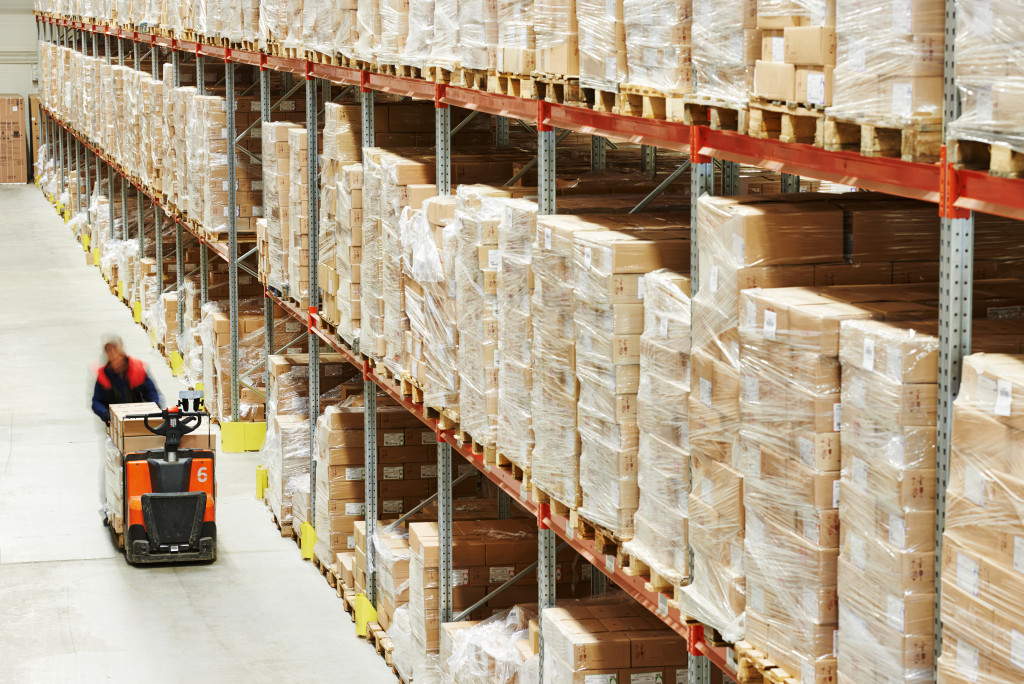- A profitable warehousing business necessitates strategic investments in equipment, technology, and skilled personnel.
- Essential warehousing tools include pallet racking, forklifts, conveyors, and barcode/RFID systems for inventory management.
- Leveraging technology like WMS, AGVs, IoT devices, and cloud solutions can streamline operations and enhance efficiency.
- A dedicated, trained workforce is crucial, hiring appropriate skills and providing regular training.
Starting a warehousing company can prove immensely profitable due to the ever-increasing demand for storage solutions driven by online shopping and global trade growth. According to a report from Business Insider, e-commerce sales are projected to rise from $2.3 trillion in 2017 to $5.2 trillion in 2021, indicating a significant growth in demand for warehousing services. Furthermore, a study by Mordor Intelligence reveals that the global warehousing and storage market is expected to register a CAGR of more than 10% from 2021 to 2026. This impressive growth rate underscores the profitable potential of running a warehousing business in today’s market.
However, starting a warehousing company will require you to make strategic investments. Here are a few pieces you will need to ensure your warehouse is well-equipped and efficient:
Warehousing Equipment

Investing in the right equipment is paramount for successful and efficient warehousing operations. The appropriate selection of equipment not only enhances productivity but also ensures the safety of your workforce. Here are some of the top essentials:
Pallet Racking System
A pallet racking system is a core storage solution in the warehouse. It provides an efficient use of space, allowing for an orderly arrangement of goods and ease of inventory tracking.
Forklifts
Forklifts are essential for moving heavy goods within the warehouse. They come in various types suited for tasks such as stacking, loading, and unloading goods. Purchasing a variety of forklifts will enhance your operational capabilities.
Stainless Steel Conveyors
High-quality stainless steel conveyors are a must-have in every warehouse. They help smooth the transportation of goods within the warehouse, reducing manual labor and the risk of injury. Moreover, their sturdiness ensures longevity, making them a sound investment.
Barcode and RFID systems
Barcode and RFID systems are crucial for efficient inventory management. They allow for easy tracking and identification of goods, leading to reduced errors in inventory counts and improved accuracy in order fulfillment.
Technology

In today’s fast-paced and competitive marketplace, ensuring that your warehousing operations are technologically advanced is no longer optional— it’s a necessity. Leveraging technology can significantly streamline your processes, enhance productivity, and improve accuracy, giving you a competitive edge.
One way to make your warehousing operations technologically advanced is by implementing a Warehouse Management System (WMS). A WMS software application offers a comprehensive solution for managing inventory, space, and labor in the warehouse. This software can automate various processes from receiving to shipping, reducing manual tasks and enhancing operational efficiency.
Another key technology to consider is Automated Guided Vehicles (AGVs). AGVs can navigate the warehouse independently, moving goods from one point to another with minimal human intervention. By adopting AGVs, you can substantially improve your operations’ speed and efficiency while reducing the risk of accidents and injuries.
Also, consider implementing Internet of Things (IoT) technology. IoT devices can collect and analyze data to provide insights into your operations. They can monitor inventory levels in real time, track the conditions of goods, and even predict the maintenance needs of your equipment, thereby helping you to make informed decisions.
Finally, integrating cloud technology can provide your warehousing operations with flexibility and scalability. With cloud-based solutions, you can access your data and processes from anywhere, anytime, enabling you to manage your warehouse more effectively.
Leveraging these technologies can help you modernize your warehousing operations, improving efficiency, productivity, and profitability. By staying on top of technological advancements, you can ensure your warehouse remains competitive in the ever-evolving marketplace.
People
Successful warehousing operations are not just about the right equipment and advanced technology; they also rely on the people who manage and operate these elements. A dedicated, skilled, and motivated workforce is the backbone of any warehouse. These individuals ensure the seamless running of operations, from managing inventory and operating machinery to providing safety standards.
Hiring the right staff starts with clearly understanding the skills and qualifications required for each role. For instance, warehouse managers often need excellent leadership and organizational skills, while forklift operators require specific certifications. Once you’ve established a clear job description, reliable recruitment channels such as professional hiring agencies, job boards, or social media platforms can help attract qualified candidates.
Training is another essential aspect when it comes to personnel. Even the most experienced employees may need training to familiarize themselves with your specific operations and protocols. Regular training programs can enhance and update their skills with the latest best practices and safety standards.
Final Thoughts
In summary, running a successful warehousing business requires strategic equipment, technology, and people investments. Investing in the right tools and technologies can streamline your operations and stay competitive in today’s market. And by hiring and training a dedicated workforce, you can ensure that your warehouse runs smoothly and efficiently. Keeping these crucial pieces in mind will set your warehouse up for success.





